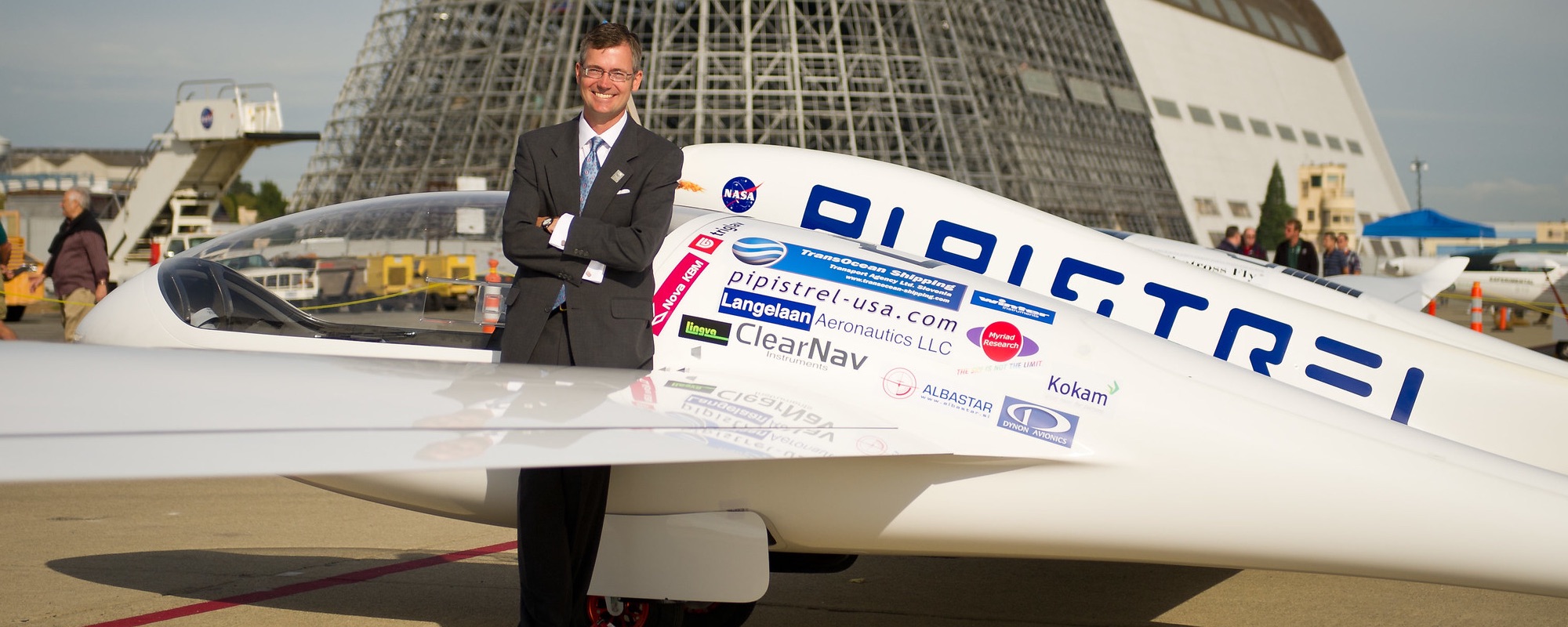
The Taurus G4: twice as efficient and twice as fast as a Prius
In September 2011 the Taurus G4 electrically powered aircraft flew at an equivalent fuel efficiency of 403 passenger miles per gallon at a speed of 107 miles per hour. This is both twice as efficient and twice as fast as a Toyota Prius, and is almost six time more efficient than a typical 4-seat general aviation aircraft!
The aircraft was designed and built by Pipistrel, a Slovenian manufacturer of self-launching sailplanes and light sport aircraft. I had two roles on the team, one administrative and one technical. I was Team Leader, which meant managing the team's interaction with the CAFE Foundation (the competition organizers), organizing documentation (there is a lot of documentation involved in ensuring that an aircraft is airworthy) and generally ensuring that the project ran smoothly.
My technical contribution was in flight path planning and optimization. In 2008 I was awarded a National Science Foundation CAREER award to conduct research in flight path planning for small unmanned aerial vehicles (UAVs), with the objective of enabling extremely long distance flights by exploiting winds aloft and lift (in essence enabling soaring flight for small UAVs). With two of my graduate students (Anjan Chakrabarty and Kirk Miles) I took this research and applied it to the problem of maximizing flight efficiency for the Green Flight Challenge. Researchers from the Meteorology Department at Penn State University (AJ Deng and David Stauffer) provided high resolution wind forecasts for the competition area and we generated optimal flight plans based on this data. During our September 27 flight (the "efficiency flight") our predicted energy consumption was within 1% of the actual energy consumption over the first three laps of the course! This shows: (a) on average, the predicted wind field matched the actual wind field closely; (b) the aircraft performance model is very close to true performance; (c) most importantly, that our pilots Dave Morss and Robin Reid are incredibly good, able to compensate for inevitable differences between predicted and actual winds and able to fly the airplane to maximize performance. Once we finish analyzing our flight data we will submit the results for publication.
What is next?
Two teams at the GFC have shown that electricity is a viable (indeed, a beautiful) way to power aircraft. The Taurus G4 and the eGenius are both virtually inaudible as they fly overhead (even at low altitude!). Electricity is comparatively cheap: at 8 cents per kilowatt hour it costs under $7 to fly the G4 for nearly 3 hours. At the GFC the power for the batteries came from a geothermal power plant, so our flights were truly emissions free. We are witnessing, and participating in, the birth of affordable and truly green personal air travel.
Start up companies, small businesses and aircraft homebuilders all over the US are working on electrically powered aircraft. We expect to see many electrically powered aircraft take to the skies over the next few years, and we expect to see continuous performance improvements as battery technology continues to improve.
Note that many of the concepts proposed for Urban Air Mobility focus on electric powered flight. Developing successful aircraft to enable air-taxi operations is challenging, involving technological development as well as development of operational concepts and regulations. Both progress and investment in the required technologies for UAM have been significant, and I expect to see regular flight operations soon.
Background of the Green Flight Challenge
The Green Flight Challenge was announced by the CAFE Foundation (Comparative Aircraft Flight Efficiency) at the 2009 Experimental Aircraft Convention at Oshkosh, Wisconsin. The competition is for aircraft which can fly at least 100mph (average flight speed) over a 200 mile course while achieving fuel efficiency greater than 200 passenger miles per gallon. This represents an improvement of approximately 200% over current general aviation aircraft, and in fact would result in fuel efficiency equal to a Toyota Prius (at double the speed of the Prius).
The Green Flight Challenge is one of NASA's Centennial Challenges (these are administered through the Office of the Chief Technologist). These are challenges issued to drive technological progress in aerospace engineering with a focus on technologies relevant to NASA's missions. The $1.35Million prize to Team Pipistrel-USA.com for winning the GFC is the largest prize ever awarded for aviation.
Sailplanes and motorgliders are obviously very efficient aircraft, and sailplane pilots everywhere point out (correctly) that they can fly long distances with zero fuel consumption. This of course ignores the fuel required for the aero-tow (or winch launch), and that they require certain atmospheric conditions to achieve their soaring flights. The minimum average flight speed requirement (which in this case is actually ground speed, not airspeed) means that the use of soaring is not feasible for this competition. We were not allowed to choose the time or place of our flights, hence we had to be prepared for favorable and unfavorable weather.
The use of gasoline powered engines was not required by the competition. Alternative fuels (especially bio-fuels) was encouraged with a special prize for best bio fuel aircraft, and the energy equivalence of fuels was defined by the competition committee. For example, 33.7 kWh of electricity was defined as equivalent to one gallon of gasoline. Fuel efficiency was defined as "passenger miles per gallon-equivalent," or pMPGe.
Links
Bill Ingalls is a NASA photographer. His photos of the competition are available on a flickr set. They are very good!
Links to Pipistrel USA and Pipistrel are also given below. Finally, for more information on NASA's Centennial Challenges please follow the link to the Office of the Chief Technologist.
NASA flickr stream: http://www.flickr.com/photos/nasahqphoto/sets/72157627640803245/
Pipistrel USA: http://www.pipistrel-usa.com/
Pipistrel d.o.o. http://www.pipistrel.si/
Our chief pilot: http://www.davemorss.com
NASA Centennial Challenges (Office of the Chief Technologist): http://www.nasa.gov/offices/oct/home/index.html
Green flight challenge highlights: http://www.youtube.com/watch?v=2z9Qy9rrwQU
YouTube video of awards ceremony: http://www.youtube.com/watch?v=BsxL_B5_rO0